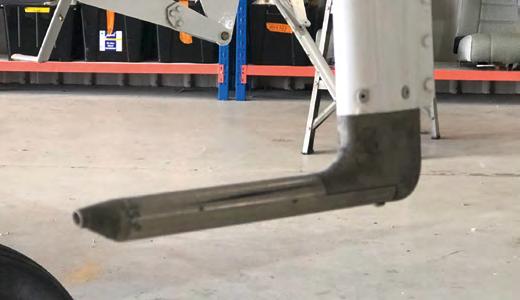
4 minute read
What should members be doing before returning to flight if their aircraft hasn’t been used in a while?
Don’t rush
Ensure all scheduled maintenance requirements that are due are completed.
Advertisement
Carry out a thorough pre-flight inspection
Possibly the first thing to check before anything else, and certainly before the aircraft is moved, is the fuel system for contamination. Water can get into a fuel tank through poor fuel cap seals or even cap locking mechanisms. Any substantial movement of the aircraft may disperse water and other contaminants away from the fuel drain points. One of the attributes of Avgas is its ability to remain ‘within spec’ for a fair length of time. With the advent of Mogas being used in many aircraft, extra care should be taken to ensure that the fuel is still usable.
With long storage periods, especially if stored in warmer weather the petrol can oxidize to form peroxides. These compounds can attack rubber and metal, stripping away the liner on fuel lines or copper from fuel pumps and attacking rubber hoses. Generally, the summer volatility of petrol is 30% lower than the winter volatility which means that the loss of lighter components in summer can be quicker. However, this is not usually an issue due to higher temperatures but can create problems in Autumn and Winter if the Summer fuel is held over. To avoid this, fresh fuel should always be used in the Winter period.

Engine
There isn’t a lot you can do with the engine apart from give it a good look over for bird nests and corrosion and to remove any bungs etc. The engine should not be run without the intention of flying as it’s rarely possible to get it to normal operating temperature on the ground in a bid to boil off any moisture. Ground running tends to promote formation of condensation as the engine cools again.
It is important to note the engine should not be rotated by hand unless you are going flying as this can wipe off any residual oil coating on the various surfaces and leave them prone to corrosion.
It may be wise to change the engine oil as this can absorb moisture. In an ideal world, everyone would change the oil prior to a lay-off as this will remove any of the harmful combustion process by-products and contaminants from the oil.
Check the external surfaces of the cylinders and other components for corrosion. Keeping the cowlings nice and clean will show up any oil leaks that have appeared and give an indication as to where a leak has occurred.
Airframe
Pitot-static systems are particularly prone to blockage either by water or insects, which find the ports extremely attractive places to occupy. If the ports have been securely blanked off, make sure all of the blanks are removed prior to flight.
A careful inspection should be carried out anywhere that birds may decide to nest. Don’t forget inside tail fairings and up inside the undercarriage bays of aircraft with retractable wheels. Rodent attack is possibly the worst enemy. It doesn’t matter if the aircraft is parked indoors or outside – they can break in.
Tyres will develop flat spots when not turned for a while. Normally this isn’t an issue and once back in use they will resume their normal shape. As aircraft tyres have a relatively small total volume compared with car tyres, a small leakage can make a big difference on the pressure. This in turn adversely affects the ground handling and in particular the effective drag – not helpful on the take-off run. The possibility of a bit of air leakage over the shutdown period combined means it’s a sensible idea to check tyre pressures.
The battery should be removed and charged accordingly. If not, due to the battery being down on power, it will then be charged at a much higher rate by the aircraft electrical system than that of a battery charger. Wet cell batteries will then start to vent out some acid during this higher power charging which will, in theory, find its way overboard through the battery vent lines. Unfortunately, the acid can sit in the battery box or, even worse, contact the aircraft structure causing massive corrosion problems.
Give the aircraft a wash so it’s nice and clean to inspect for defects and corrosion. Corrosion is the gradual deterioration of metal due to a chemical reaction with its environment. The reaction can be triggered by the atmosphere, moisture, or other agents. When inspecting the structure of an aircraft, it is important to watch for evidence of corrosion on both the outside and inside. Corrosion on the inside is most likely to occur in pockets and corners where moisture may



accumulate; therefore, drain holes must always be kept clean. Also inspect the surrounding members for evidence of corrosion.
In summary
It’s a fact of life that none of us can fly as much as we want to – or indeed intend to. After any protracted time out of the air it’s sensible to spend extra time checking over your aircraft before taking to the skies again.
*Information sourced from the Light Aircraft Association UK and BP Australia.




